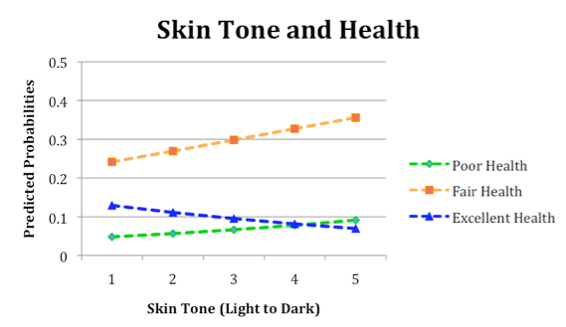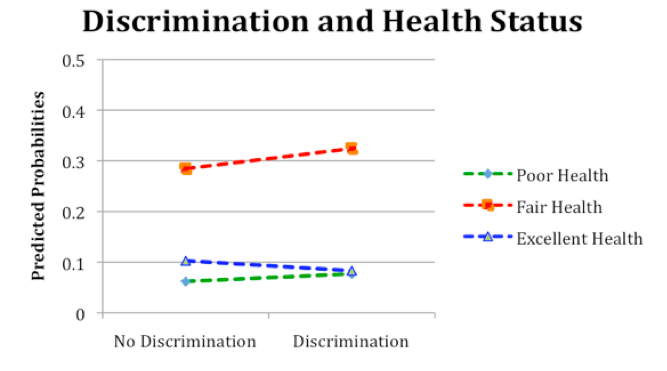Developed by Katie Brown in coordination with John Garcia
Center for Political Studies (CPS) and Inter-university Consortium for Political and Social Research (ICPSR) Researcher John Garcia studies this phenomenon. In a forthcoming paper, “Race as Lived Experience: The Impact of Multi-Dimensional Measures of Race/Ethnicity on the Self-Reported Health Status of Latinos,” Garcia – along with colleagues Gabriel R. Sanchez, Shannon Sanchez-Youngman, Edward D. Vargas, and Vickie D. Ybarra – develops a multiple dimensional model of race and tests its relation to health with American Latinos.
The authors measure race with a survey. The survey includes questions that consider three dimensions of race: ascribed race (or what people think others see as their race), skin color, and experience with discrimination. Garcia then combined these questions into a scale. Unlike other measures that consider race to be genetic or biological, Garcia’s scale approaches race as a socio-cultural construct. Race is typically captured through self-identification utilizing social identity theory. As the source is the individual, this assumes that one’s self identity is “derived” primarily or exclusively from the individual him/herself. The relational nature of racial identification can become muted or minimize the role of interactions, institutions and policies that affect race, status, and power relations. Garcia seeks to diversify this approach by creating and testing a new scale.
After creating the scale, the authors then interviewed 1,200 Latinos by phone. The survey also included questions about health.
Interestingly, the authors find a connection between the multiple dimensions of race and self-reported health. The darker the skin, the worse self-reported health. The graph below illustrates this trend.
Likewise, health appears to deteriorate with more discrimination experiences. The graph below shows this finding.
Ascribed race, on the other hand, was not related to self-reported health. But, when all three dimensions of race are combined into a single scale, then, the authors report,
“Latinos whose daily lives are more directly influenced by their race/ethnicity report poorer health than Latinos for whom race is not a central factor.”
These results are important for multiple reasons. A multi-dimensional approach to measuring race – like this one – is truer to lived experience. Furthermore, this approach offers more power to explain the societal injustices rooted in race, like relative health.




